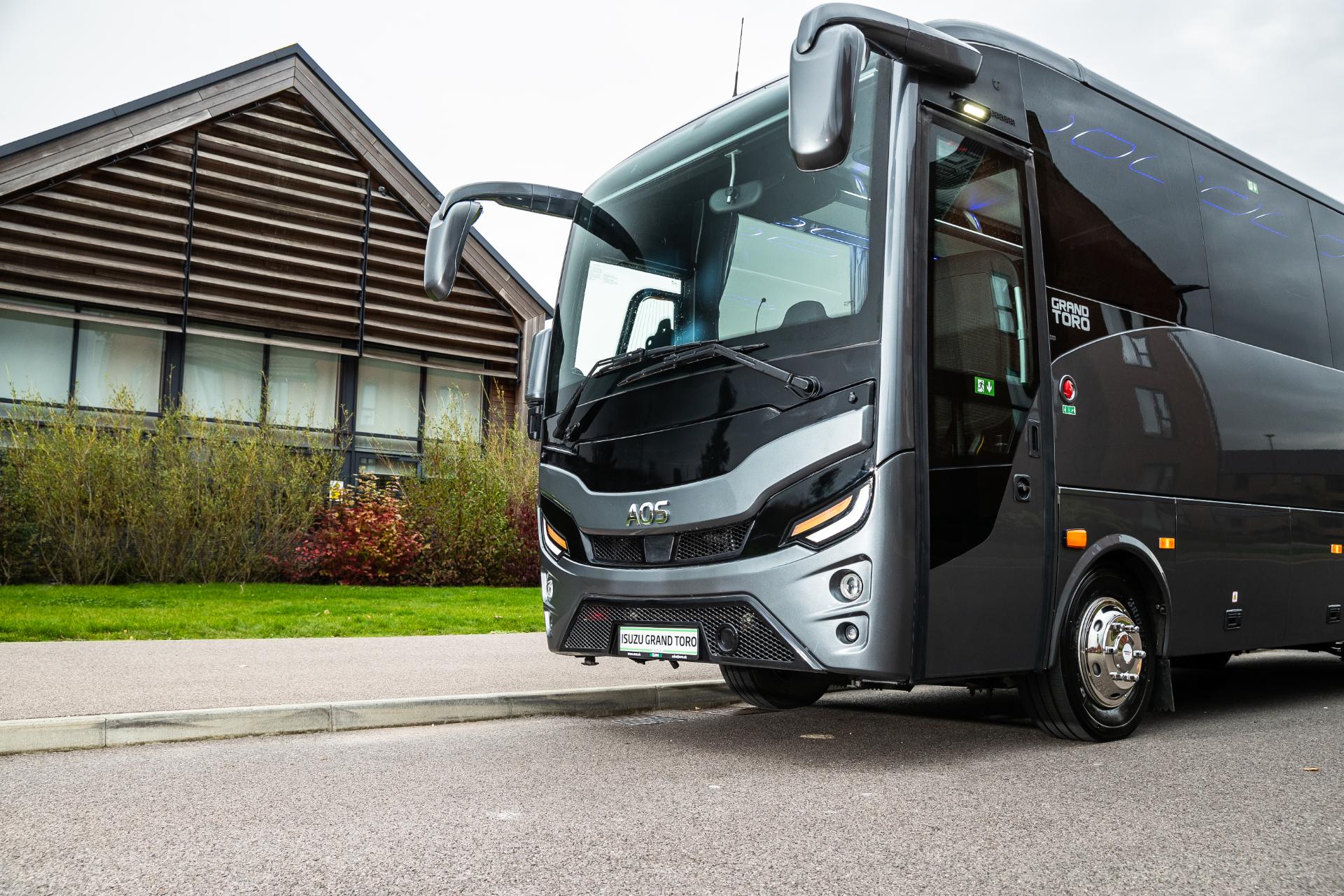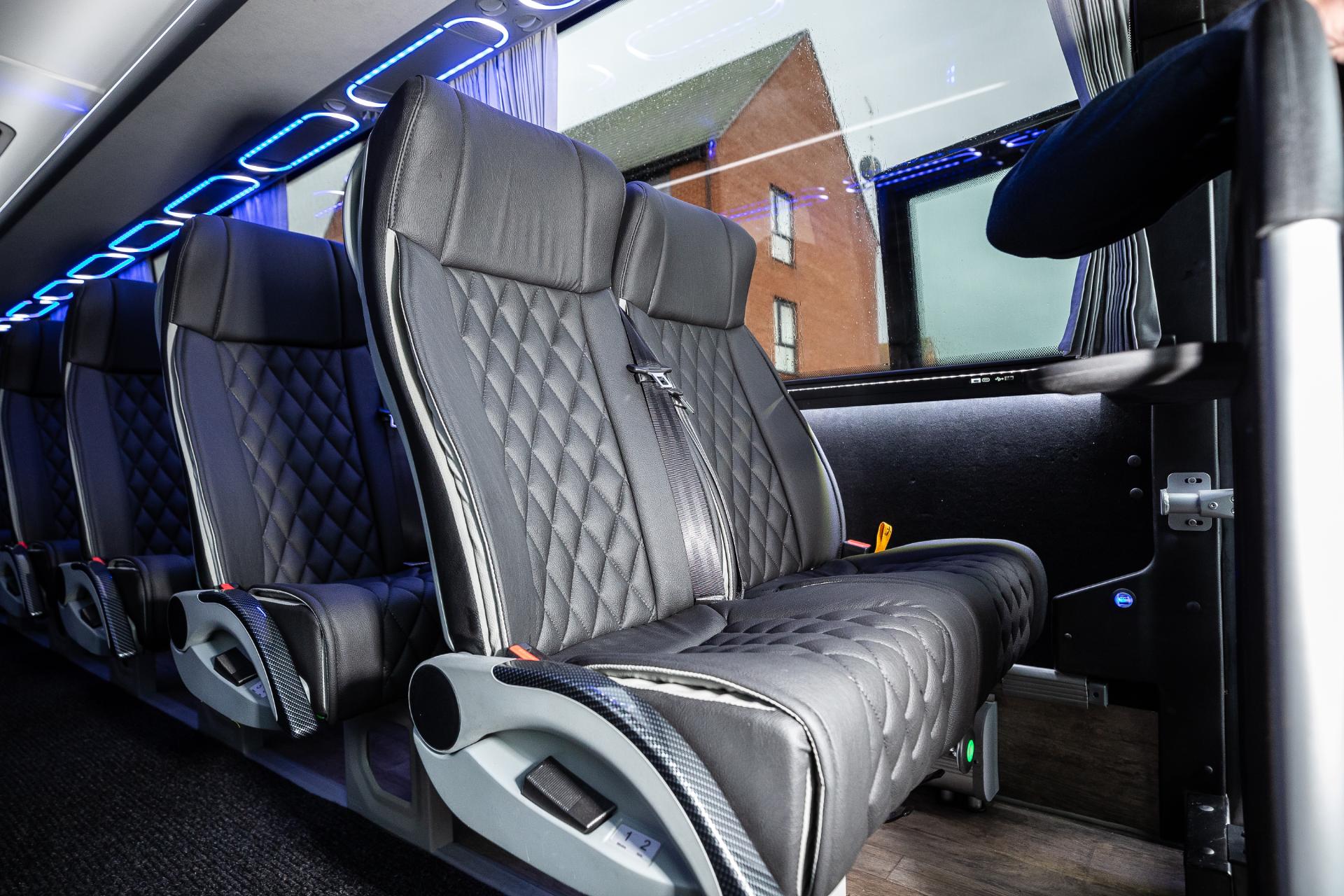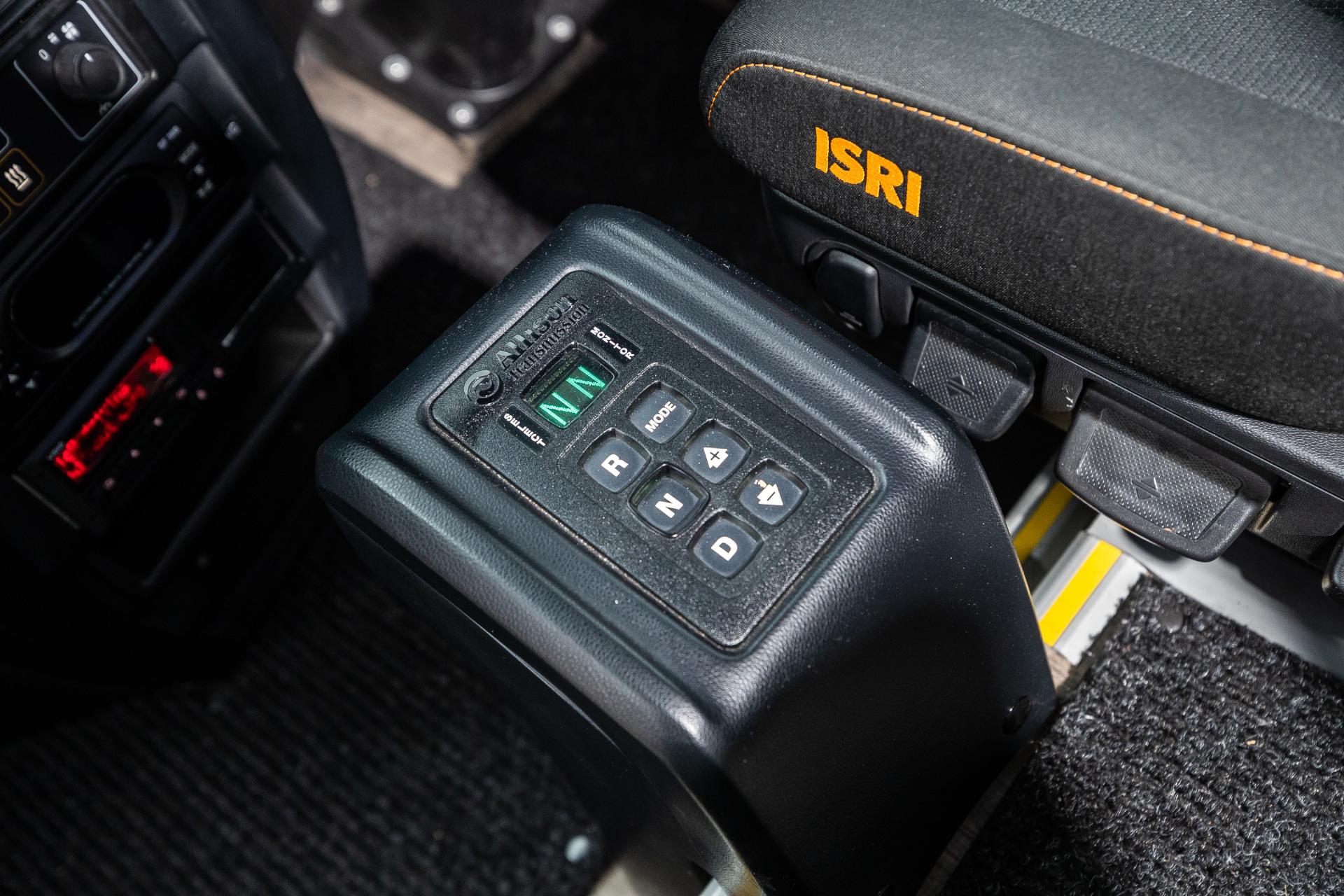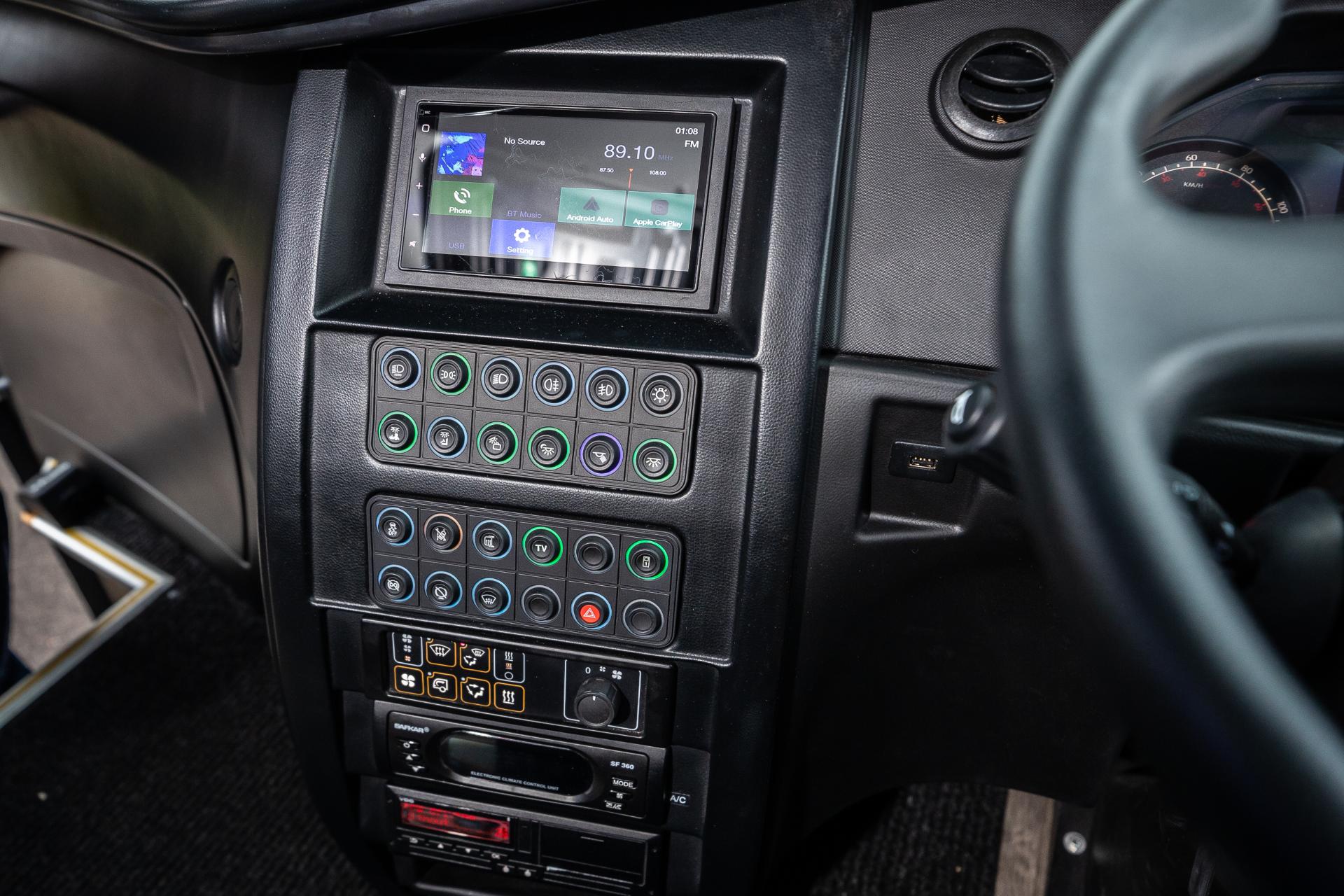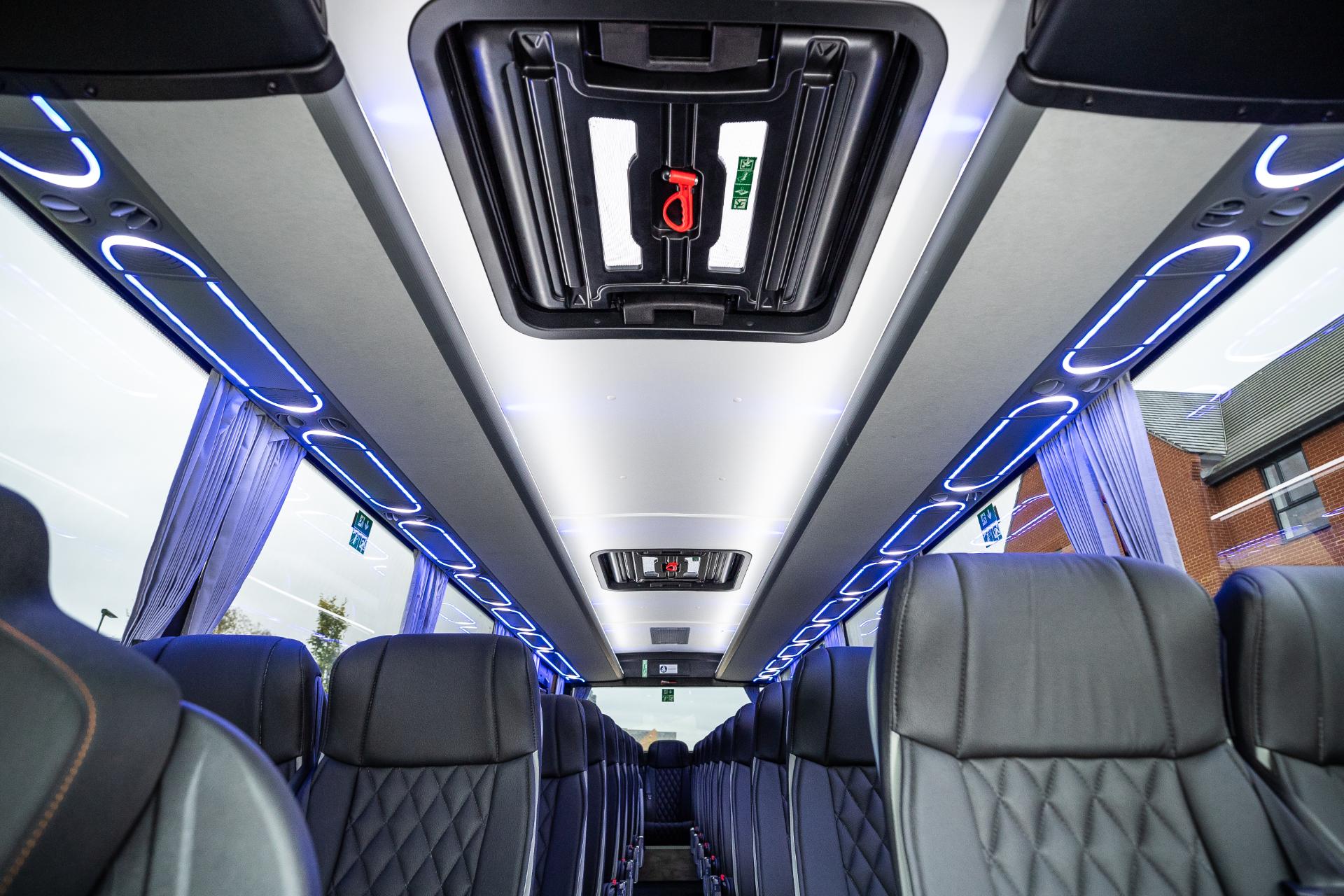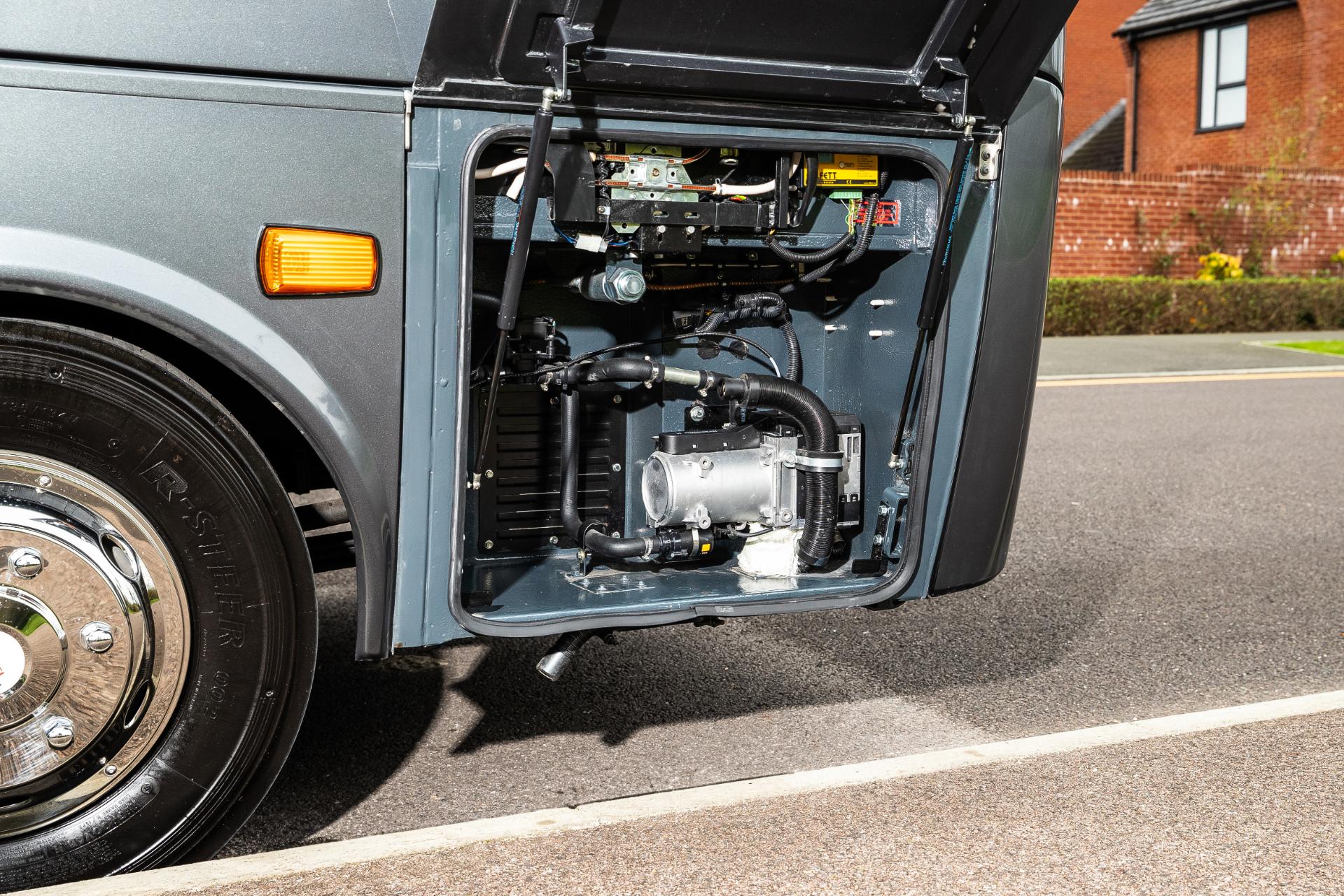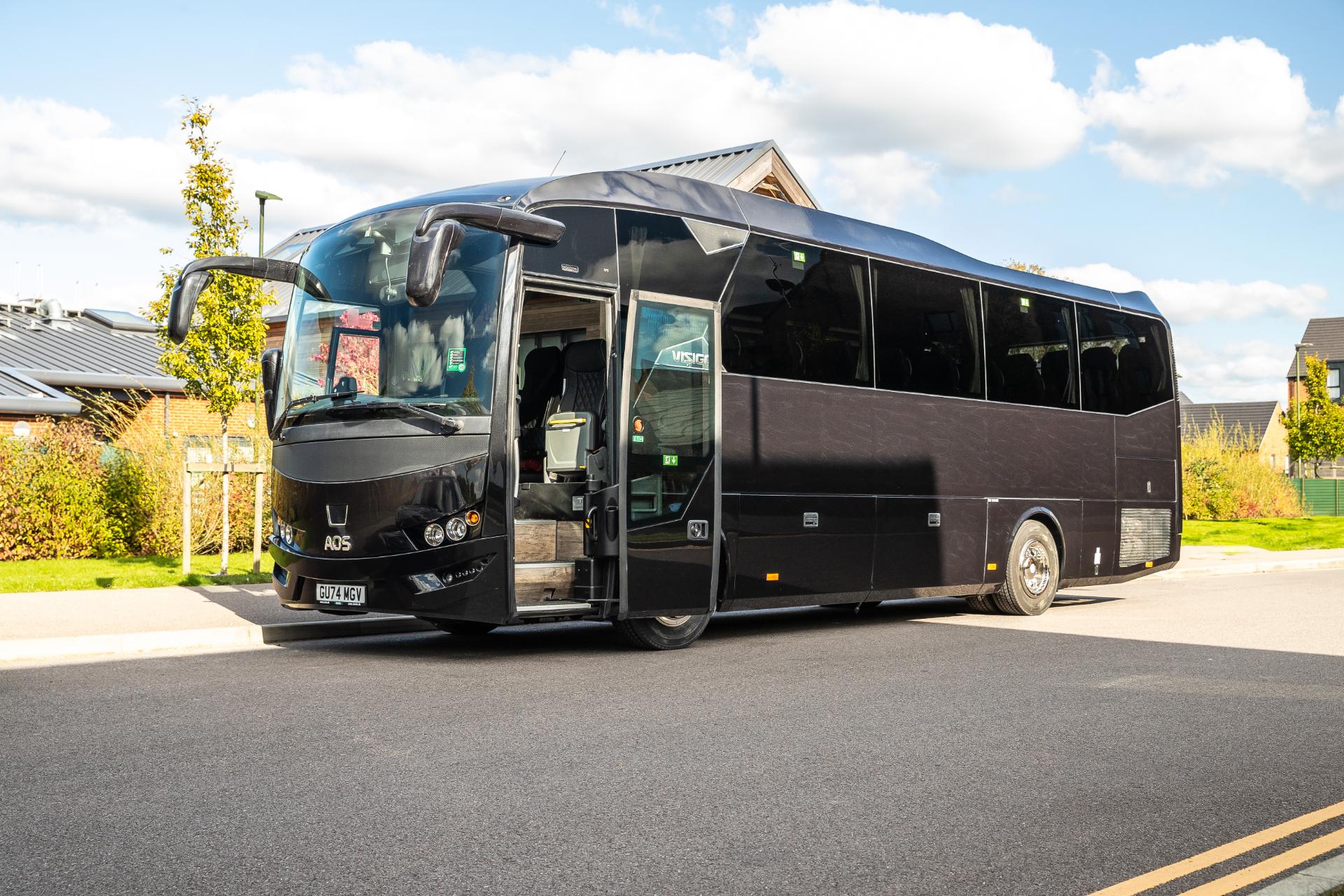ROAD TEST: AOS Isuzu Grand Toro and Visigo
While there’s always been plenty of choice of front-engined, light truck based midicoaches, purpose-built integral vehicles have been thin on the ground. The EVM entered the fray with the Grand Toro and Visigo – both built in Turkey at the Anodolu Isuzu factory. We road tested them side by side to see how they stack up
Click on the header image to access a full gallery of photos
 Operators used to tell me that midicoaches were something of a niche. That their customers actually wanted a ‘proper coach’ and that a vehicle with 35 seats was a bit of an oddball.
Operators used to tell me that midicoaches were something of a niche. That their customers actually wanted a ‘proper coach’ and that a vehicle with 35 seats was a bit of an oddball.
The coach industry has moved on, and there are now few operators who’d be without a coach which bridges the gap. There are many reasons for this, but I am old enough to remember when a midicoach was a 12-metre coach with two metres cropped out of the middle of it, or a fairly agricultural front-engined truck coachbuilt with a seated body.
Not only have front-engined midicoaches become more civilised, and some largely resolved the intrusive engine bump, but the rear-engined midicoach has come of age, no longer a variant of something much longer. EVM’s AOS Isuzu Grand Toro and Visigo are the most recent examples of the genre, and gaining ground against some impressive competition.
The Grand Toro, in particular, has found a market. It’s an unusual vehicle, in that the engine and gearbox sit beneath the deck behind the front wheels; so it’s really mid-engined, not unlike the B10Ms of yore. It offers 37 seats on a flat floor, a ‘real’ coach look and ample luggage for most duties.
The AOS Isuzu Visigo (which I first encountered in 2019 at Harris in Ireland, which then imported it) is very much the premium sister offering from EVM but configured more conventionally with the engine at the back. It, too, offers up to 37 seats on a flat floor.
Both coaches have Cummins engines – the Grand Toro the four-cylinder 4.5-litre, and the Visigo the more powerful, six-cylinder 6.7-litre engine. The Grand Toro has its 205bhp routed through an Allison six-speed auto gearbox, the Visigo sending its 315bhp through a ZF EcoLife auto ‘box. They are very different coaches, and clearly targeted at different markets.
The Coach Stig and I decided to travel down to EVM’s Horsham HQ and road test the two vehicles side by side, not so much to identify the similarities as their differences. And finally, to decide where each coach fits into the jigsaw of work.
AOS Isuzu Grand Toro
Exterior
Grand Toro has gone through an evolution with EVM, and they’re justifiably calling it Grand Toro 2.

Grand Toro
It’s certainly very different from the production sample which they first showed us. The entry step has been revised to eliminate the previous electric step, new mirrors have been added, the interior lighting has been upgraded, USB charging installed, and the body line painting has been changed to give a sleeker appearance.
On top of this are numerous interior uplifts and better latches on the lockers. Added together, the Grand Toro now looks much more accomplished. The front of the coach has some smart curves and styling cues, with ventilation grilles between which reflect the position of the engine. The headlamps and sidelights are located in the lower valance.
The new mirrors include a lower corner mirror on the offside. The passenger plug door has glazing low down, to aid the kerb view. Along the nearside are three locker doors, but the first is for access to the batteries. The remaining two offer some useful luggage space. The Grand Toro has only 4.6m3 of luggage space, most provided by the large rear boot, but that’s common in this size of vehicle.
The locker behind the nearside rear wheel is another inspection cover. The rear has a gas-strutted boot, either side of which are the attractive rear lamp clusters. Just above the boot door is a reversing camera, and above that a styling panel and an ample rear window. The air-con pod is mounted at the rear of coach. The vehicle is much the same on the offside, with additional locker space. The side glazing is sensibly five identical pieces of privacy glass, keeping the parts list simple.
Interior
The new passenger entry is good, with three steps to board, plus another to reach the aisle. They are fairly high but not excessively so. There’s a handrail to the left plus a grab handle on the right. There is a large decency screen with uprights in brushed steel.
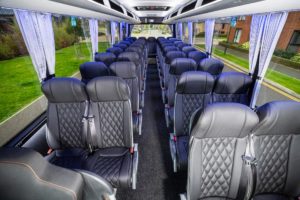
Nicely specified in Grand Toro 2
The coach is offered in a variety of configurations from 37 plus driver (as in the photos) through 35 + courier + driver, the same with PSVAR preparation or PSVAR, 33 plus two tables or 31 with four tables, both with a courier seat. The driver has a very nice ISRI seat which the Coach Stig said was comfortable and had plenty of adjustment. Driver and courier have mics.
The diamond-stitched passenger seats are excellent, each with seatback tables. Each seat position has multiple USB charging points, including the new USB-C which will become standard and supersede the larger socket. There are two mounted in the waist rail and others between the seat squabs.
The seat spacing is more than adequate for most groups and few seats had a pillar to obscure the view. Overhead, there two combined roof lights/emergency exits in the roof, full length (if shallow) luggage racks and ventilation louvres plus natty LED lighting. There are two lockable lockers at the front of the racks, once of which has the First Aid kit.
Overall, it’s a neat interior which would pass muster from all work, with good legroom and no sense of claustrophobia.
Driving
The Coach Stig was an instant fan of the view around the coach from the driver’s seat. It gave a good impression of where the corners are.
He had some criticism of the new mirrors and in particular of the lower mirror on the driver’s side which actually obscured some of the view from the main mirrors. Later, an EVM technician adjusted the main mirror, which improved the view around the A pillar markedly but, in the Stig’s view, this is a coach which would benefit from camera mirrors despite them being seen as a premium option.
There was also a bit of a blind spot created by the B pillar when he tried to look behind his right shoulder; not uncommon in coaches. Other criticism of the cabin included the low position of the tachograph in the narrow gap between the seat and lower dash, which he felt was right in the ‘kick’ zone.
The Allison push-button gear selector is on the left. The diver gets a nice touchscreen audio unit on the left of the dashboard, beneath which are lighting and HVAC controls. The main binnacle features tachometer, speedo, fuel and temperature displays. At his right hand are the hand brake plus additional maplight and window controls. The driver window is heated.
Just in front of those switches is an inspection cover magnetically secured which the Stig felt could fall victim of prying fingers. There are adequate places for document storage and mobile phone.
Out on the road, the willing 4.5-litre Cummins engine gave good acceleration, and the Allison gearbox made smooth and logical gear selections. Upshifts come at around 2,500 rpm because this engine is a little more revvy than something heftier. That said, apart from a mild buzzing, noise is kept well under control. There was evidence of some induction boom on over-run at high speed but it was only occasional. Considering the position of the engine, the soundproofing is impressive.
Brakes, said our test driver, are sharp and powerful, and the steering has good feedback. The Allison gearbox automatically selects neutral after a long period idling; this should be part of driver training. The ride – the coach has leaf springs at the front, air at the back – was firm but comfortable.
The Grand Toro drove consistently and well. It’s not a powerful coach but the Cummins engine has a reputation for reliability, as does the Allison transmission.
AOS Isuzu Visigo
Exterior
The first glance tells you that the Visigo is an altogether different proposition to the Grand Toro, with a step up in the styling department.
It’s a nice-looking coach, and a departure from the visual cues of other rear-engined midicoaches in the market. The front is more bulbous, with clean lines and two distinctive lighting clusters, with a roof bulge for the air con pod. The glazing behind the B pillar features inset brightwork for the Visigo moniker and the coach side has plenty of contour to look interesting.
There are two powered locker doors revealing a traditional ‘through’ luggage bay. Luggage space isn’t bad at 5.5m3, though with a wheelchair lift, that drops to 4m3. Around the rear, it features the same light cluster as the Grand Toro. It has two large louvres over the engine bay and a large brightwork panel with the Visigo name. The reversing camera is up in the roofline.
The passenger door is wide and welcoming, with a handrail on the left for the three steps to driver level. A further step reaches the aisle. The courier seat folds neatly clear the entrance. There’s a fridge in the dashboard on the left.
Interior
The entrance leads to a spacious area near the driver, the driver offered ample space to access the ISRI seat.
To the left, the driver has the push-button gear selector, the tachograph below, then the HVAC system. The screens are for the audio and the reversing camera. To the driver’s right are lighting controls, and the handbrake and other controls to the right, not unlike the Grand Toro. Again, the driver has a heated side window.
Again, the Coach Stig wasn’t enamoured of the mirror positions, though the view past the A pillar was clear, and he had a good view back over his right shoulder for joining a carriageway. Speaking of visibility, the view of the speedometer was, for the Coach Stig, slightly obscured by the steering wheel but this is very much resolved by seat adjustment. The A pillar in any vehicle is a potential blindspot, and the Stig thought the pillar and the lower mirror together made concentration vital. Maybe this is another vehicle, he thought, that would benefit from camera mirrors?
In contrast to the Grand Toro, the steering was slightly heavier with great feedback; the Stig liked this. As you’d expect from two more litres and two more cylinders, acceleration was brisk and the ZF EcoLife was well up to the task of delivering swift, smooth gearchanges. The ride, too, seemed more refined.
For passengers, there are good quality, comfortable seats with USBs, and again the roof pillars were mostly aligned with seatbacks, so didn’t obscure the passenger view. The rearmost row of seats are significantly raised above the rest, offering a great forward view but also making them feel slightly exposed. Luggage racks are deep and useful, with very attractive service units with reading lights and ventilation.
Wind and road noise were well under control throughout our journey, which included some dual carriageway and city driving.
After an hour or so, arriving back at EVM, the test driver was so impressed with the Visigo that he thought it better than other rear-engined midicoach offerings.
Verdict
These two midicoaches from AOS Isuzu are chalk and cheese, the Grand Toro a great-value workhorse, the Visigo a more premium vehicle with touring within its capability.
I always hate to head straight for the price, but the Grand Toro weighs in at £155,000 retail, with plenty of options to configure it to suit a range of work, or just as a straight 37-seater for general use. School work is right up its street, as it’s economical and nimble, and in PSVAR spec is still only £167,000 [all prices plus VAT].
The Visigo is a cut above, with an engine and gearbox combination more than capable of motorway hauls plus a sophisticated ride that will draw few critics. It’s £175,000 in standard spec, £187,000 with PSVAR, and at that price point is still a consideration if you’ve previously run front-engined, truck-based coachbuilts.
The sales tell the story with Grand Toro; around 80 on the road already and with these revisions from EVM, is likely to continue on that trajectory. The Visigo is slowly creeping into the market but probably deserves a little more attention than it gets. It’s up against some established competition but, according to the Coach Stig, is well up to the challenge.
About our test driver
Our test driver is an experience coach operator with mixed fleet of marques and vehicle sizes from 16 seats to 70 seats, VIPs and school buses.
AOS Isuzu Grand Toro |
|
Specifications |
|
| Dimensions (mm) | |
| Length | 8516 |
| Width | 2350 |
| Height | 3368 |
| Wheelbase | 4475 |
| Front overhang | 1669 |
| Rear overhang | 2372 |
| Weights (kg) | |
| Gross Vehicle Weight | 11480 |
| Engine | |
| Model | Cummins B4.5E6E210B |
| Type | Commonrail Turbo Diesel Intercooler |
| Number of cylinders | 4 |
| Displacement (cc) | 4500 |
| Maximum power (kW(PS)/rpm) | 151 (206) / 2300 |
| Maximum torque (Nm/rpm) | 827 / 1200 – 1500 |
| Emission standard | Euro VI OBD-E |
| Transmission | |
| Model | Allison T3270R xFE AT (S), automatic, 6 Forward, 1 Reverse |
| Tyres | 245/70 R17.5 |
| Suspension | |
| Front | Parabolic Steel Alloy Leaf Springs |
| Rear | Air Suspension |
| Brake System | |
| Front/Rear | Disc/Disc |
| Auto-Adjusted Parking Brake | Air Actuated, Operating on Rear Axle |
| Fuel Tank Capacity (lt) | 190 |
| AdBlue Tank (lt) | 31 |
| Luggage Capacity (m3) | 4.6 |
Download the full specification HERE
AOS Isuzu Visigo |
|
Specifications |
|
| Dimensions (mm) | |
| Maximum length | 9660 |
| Maximum width | 2454 |
| Maximum height | 3368 |
| Wheelbase | 4660 |
| Front overhang | 1890 |
| Rear overhang | 3110 |
| Weights (kg) | |
| Gross Vehicle Weight | 13500 |
| Engine | |
| Model | Cummins B6.7E6E320B |
| Type | Commonrail Turbo Diesel Intercooler |
| Number of cylinders | 6 |
| Displacement (cc) | 6700 |
| Maximum power (kW(PS)/rpm) | 233 (317) / 2300 |
| Maximum torque (Nm/rpm) | 1182 / 1100 |
| Emission standard | Euro VI OBD-E |
| Transmission | |
| Model | ZF ECOLIFE 6AP1200B |
| Type | Automatic, Overdrive, 6 Forward, 1 Reverse |
| Tyres | 265/70 R19,5 |
| Suspension | |
| Front | Independent air suspension – 2 bellows – 2 shock absorbers |
| Rear | Air suspension – 4 bellows – 4 shock absorbers |
| Brake System | |
| Front/Rear | Disc/Disc |
| System | Full air brake system With ABS, AEBS and EBS, Dual Circuit, Auto-Adjusted Parking Brake, Air Actuated, Operating on Rear Axle |
| Auxiliary brake | Retarder |
| Fuel tank capacity (lt) | 250 |
| AdBlue tank (lt) | 30 |
| Luggage capacity (m3) | 5.5 (w/o Lift) 4 (with lift) |
Download full spec HERE



